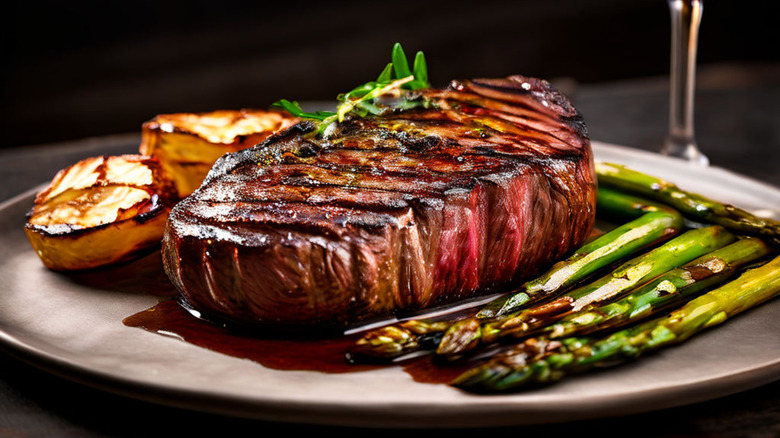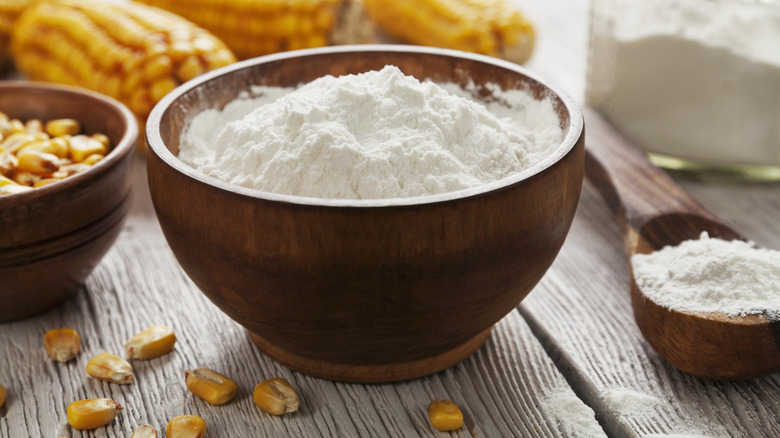Want The Perfect Steak Sear? Try Using This Common Pantry Staple
There are, at least, more than a dozen different ways to make a perfect steak, but as far as we're concerned, the best way to cook a steak is whichever one gives us the crispiest seared crust. While this can be achieved with the high heat of the grill, in a frying pan, or under the broiler, there's a little trick that will seriously enhance your steak's golden brown sear — and it's been hiding in your pantry all along.
You may be familiar with using cornstarch to make ultra crispy tofu or impossibly crunchy fried chicken, but it also deserves a place on your favorite cut of beef. That's because it absorbs the moisture on the surface of the food. Water evaporates during the cooking process, leaving behind a crispy coating. Moreover, it will have a nice brown color and a whole lot of caramelized flavor as a result of the Maillard reaction, a chemical process that occurs when the sugars and amino acids in food are exposed to heat.
The drier the cornstarch, the better
In order to get the best crust on your seared steak, you're going to need to get the surface of the meat as dry as possible. Who would have thought that sometimes super dry steaks are the goal?
To start that process, first blot the beef with a paper towel to remove excess water. Then, blend a couple tablespoons of cornstarch with a couple tablespoons of coarse salt — that should be enough for a roughly inch-thick ribeye. Coat the entire steak with the mixture. While you could pop it directly on the grill, chilling the steaks for 30 minutes in the freezer before cooking them works to dry their surfaces further.
If you prefer your meat cooked medium rare, opting for a thicker and more marbled cut like ribeye, filet mignon, or New York strip ensures you'll have ample time to achieve your sear without the steak cooking through. Once the steaks are on the grill, refrain from moving or touching them until it's time to flip them over. This allows the hot surface of the grill or pan to work its magic on the cornstarch, getting you the best possible crust.

